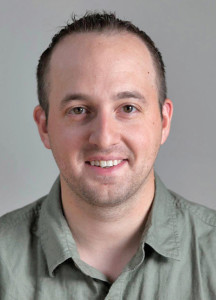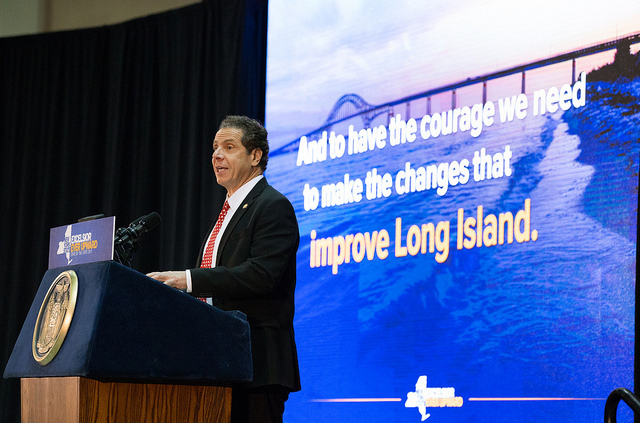Column: An unintended consequence of Cuomo’s free tuition plan

I spent four years at a private university in New York and, to the surprise of no one, it was not free.
Associating the word “free” with college seems like an oxymoron. Has anyone even seen the price of a textbook? (Luckily, as a journalism major, I avoided spending hundreds of dollars a semester on textbooks compared to students in other majors.)
But here we are in New York, approaching a brave new world in which middle-class students who meet certain criteria will soon be eligible to attend a state university or college for free, thanks to legislation signed last week by Gov. Andrew Cuomo. It’s worth noting from the start that room, board and other fees are not included in the program, so the notion of a 100 percent free college experience is misleading.
Mr. Cuomo announced the tuition plan in January, the first proposal to emerge during the weeklong unveiling of his State of the State. Tuition assistance, which goes into effect this fall, would apply students in families with household incomes of no more than $100,000 a year. Among several other caveats, that maximum household income would rise to $125,000 in 2019.
At first glance, a plan to make college more affordable for students in New York, where even the relatively low cost of state schools can result in decades of debt, seems reasonable. Of course, many were quick to point out that nothing is ever free. And the burden of this plan would fall strictly on the taxpayers, detractors argued. Given that some people routinely vote against local library and school district budgets, it’s no surprise there are those who have no interest in helping to fund someone else’s college education.
But for the sake of this column, I’m not going to dive further into that. What strikes me as a potential unintentional consequence of this plan is the effect it may have on private universities in the state.
Will small universities like St. Bonaventure University in rural upstate, which I attended from 2003 to 2006, be able to attract the same number of in-state students when alternatives like state schools appear so much more affordable? Of course, state schools have always had a sizable edge in tuition costs. But factoring in financial aid at private universities, the cost difference can sometimes be less dramatic. Now, however, will parents be able to resist nudging their children toward those big four letters — F-R-E-E — before even learning about the financial aid options available at private colleges?
Private universities are by no means only for the wealthy. In an op/ed article published in February by the Olean Times Herald, St. Bonaventure’s interim president, Andrew Roth, noted that more than 660 New York students enrolled in the university have family-adjusted gross incomes of less than $125,000. That accounts for almost 40 percent of the school’s undergraduate population.
Would I have ended up at the school that sparked my journalism career if my parents knew state schools were free? Perhaps not.
Many small upstate universities are the central hubs of their towns — and one of the largest employers. That was certainly the case where I went. And I’d hate to see the impact losing 10 or 20 or 30 percent of the student population would have on the university and the town.
Closer to home, universities like Hofstra, Adelphi and LIU could all risk losing students. Hofstra’s student body for fall 2016 was 65 percent New York residents, and 45 percent of those were from Long Island, according to the school’s website. At Adelphi, where tuition is $35,740, the number of out-of state undergraduate students accounted for 6.2 percent, according to the university website. And let’s not forget that it’s been less than a year since Dowling College closed its doors, forcing students to scramble to find new homes.
If more and more of the state’s top students are funneled into the SUNY system, drawn in by the lure of no college debt, where does that leave the state’s private universities? And where does this leave the students who can pay to attend a state school, but now may not qualify academically due to increased competition from others who would previously never even have applied?
Private universities will have to fight harder than ever to market themselves. Kristen Capezza, associate vice president for enrollment management at Adelphi, noted that 92 percent of its students are employed or attending in graduate school within a year of graduation.
“While the new state program does highlight the important affordability conversation, which happens at Adelphi year-round, it even more so emphasizes the need for private institutions to convey value and outcomes,” Ms. Capezza said.
The effect on private universities is just one ripple effect of this well-intentioned plan. Other causes for alarm are generating bigger headlines. A New York Times columnist last week went so far as to call it “the worst public policy idea of the year.”
A requirement of the program, known as the Excelsior Scholarship, mandates that students who receive free tuition for four years must remain in New York State for four years after graduating. If they don’t, they’ll get a hefty bill in the mail. There are other caveats as well, such a 30-credits-per-year requirement, which could burden low-income students who need to work while attending school — even with free tuition.
It appears this law, which was implemented without much public feedback, will be a work in progress.
 The author is the editor of the Riverhead News-Review and The Suffolk Times. He can be reached at 631-354-8049 or [email protected].
The author is the editor of the Riverhead News-Review and The Suffolk Times. He can be reached at 631-354-8049 or [email protected].









